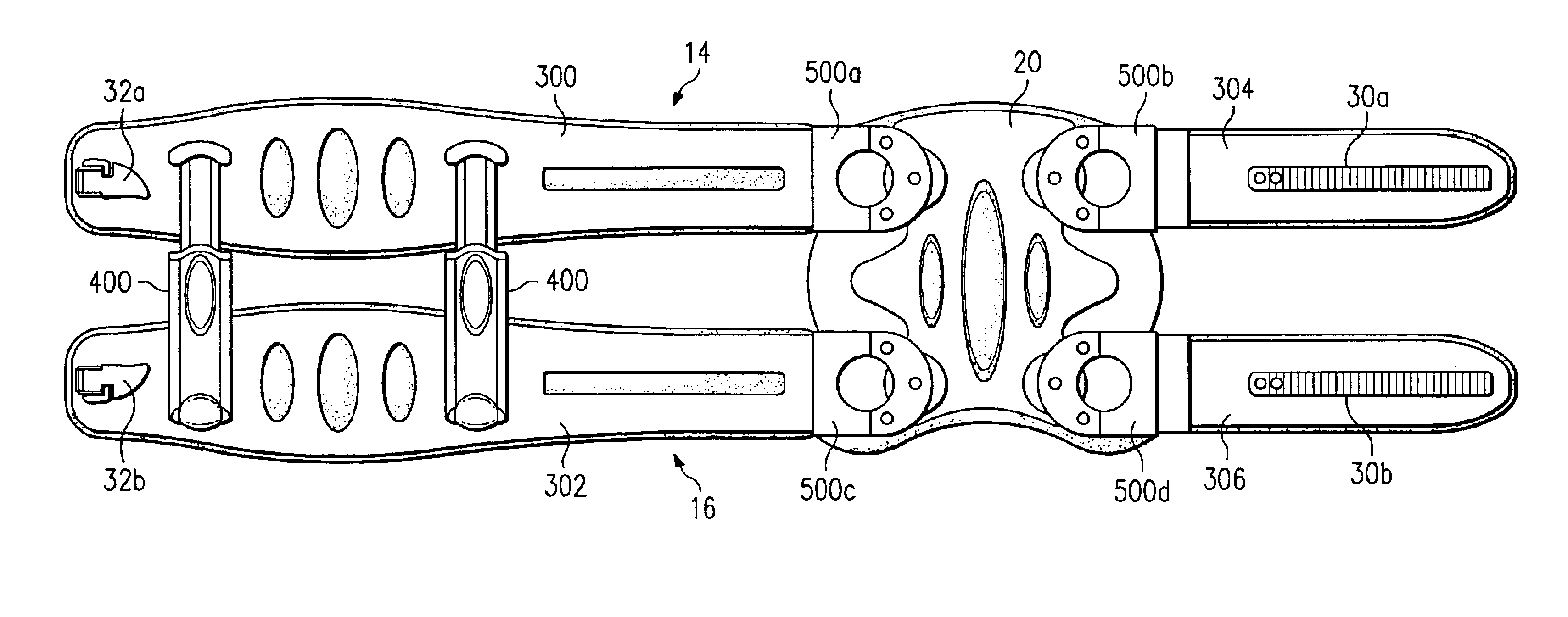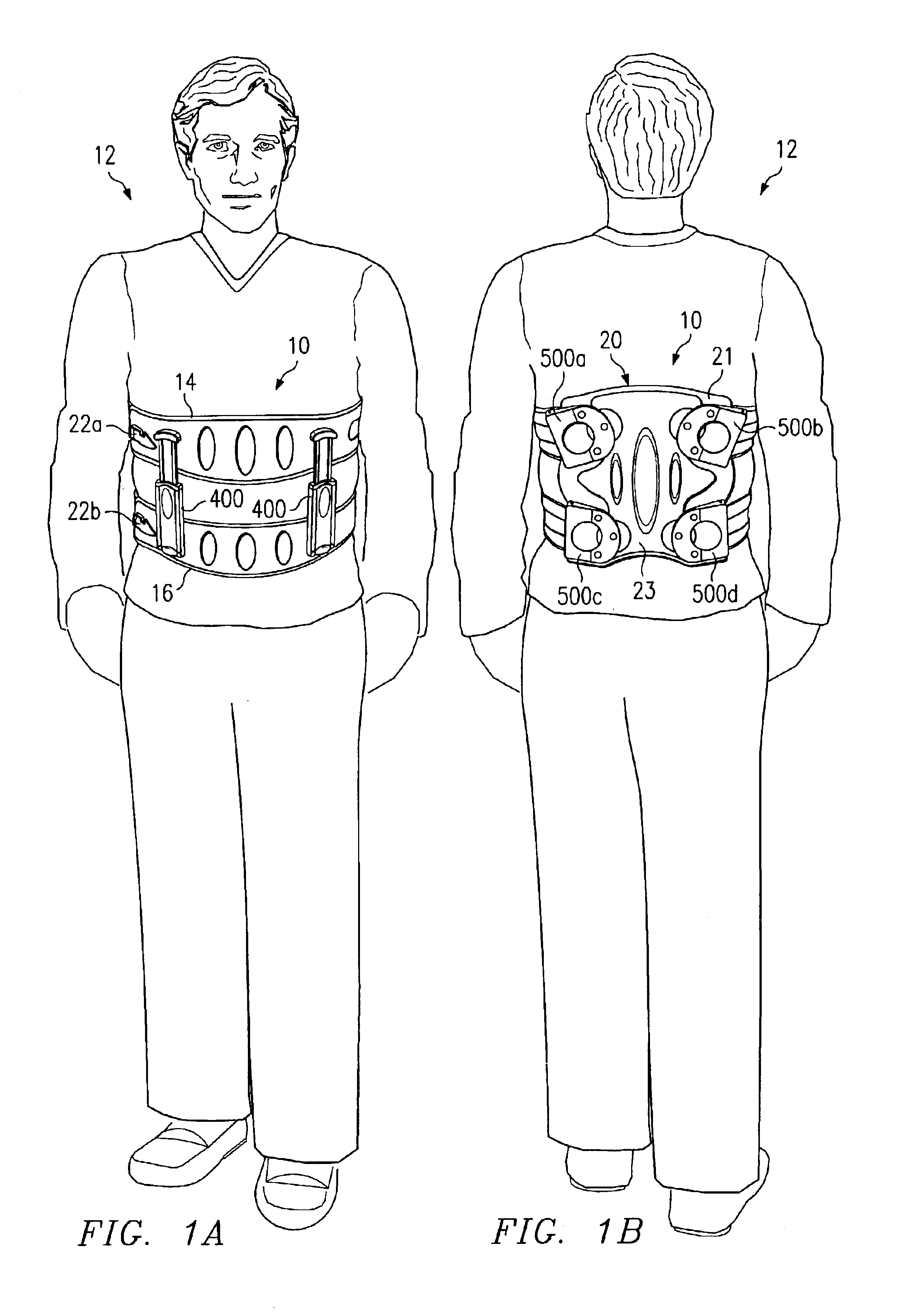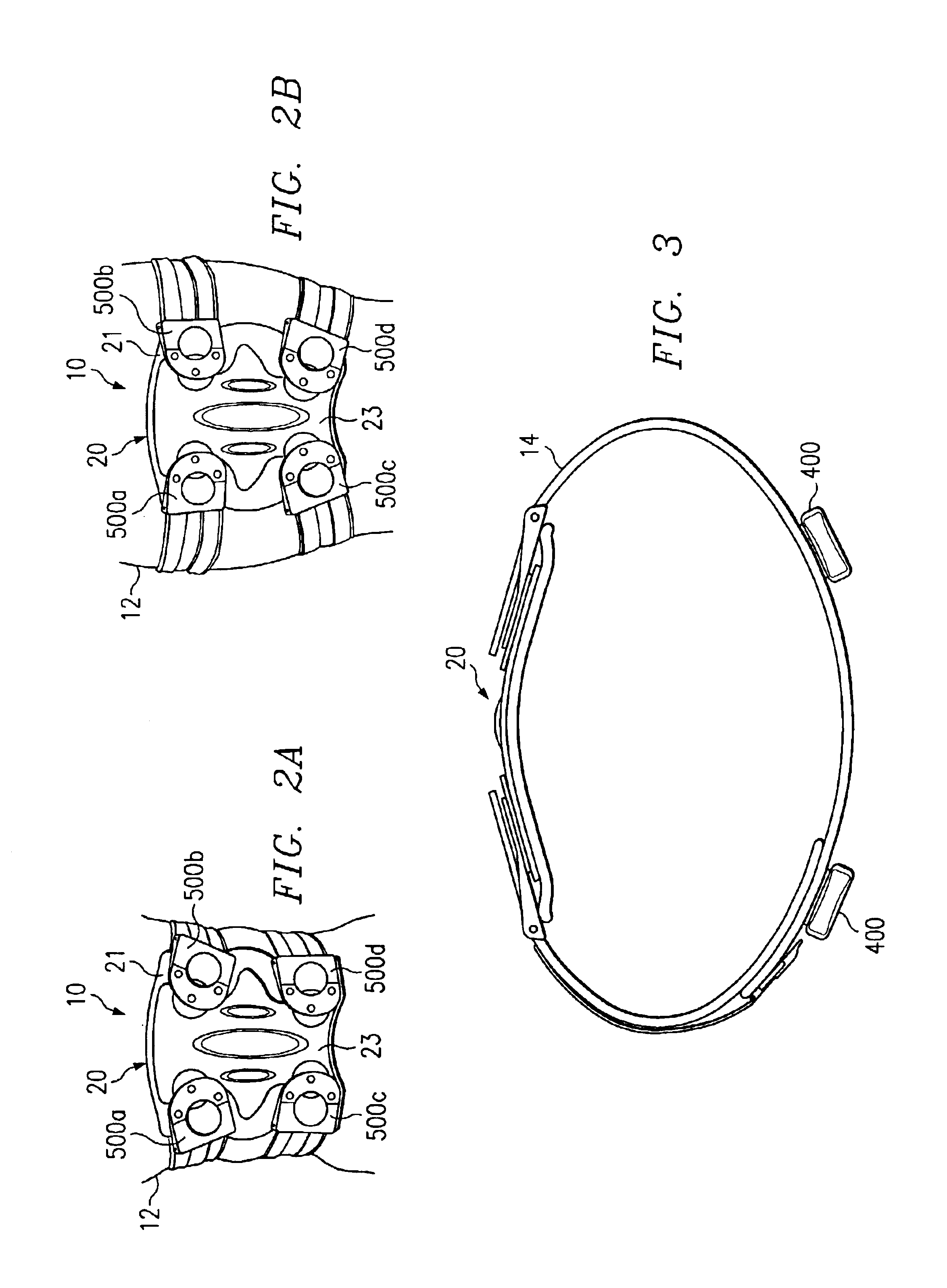Dynamically adjustable stabilization brace
a stabilization brace and dynamic technology, applied in the field of medical devices, can solve the problems of adding to the overall severity of the problem of dealing with bodily injuries, creating the greatest challenges and cost to the medical system, and achieve the effects of stabilizing the spine, improving healing and rehabilitation, and limiting bending, lifting or other activities
- Summary
- Abstract
- Description
- Claims
- Application Information
AI Technical Summary
Benefits of technology
Problems solved by technology
Method used
Image
Examples
Embodiment Construction
[0018]FIGS. 1A and 1B are front and rear views, respectively, illustrating a user 12 wearing an example stabilization brace 10. In the illustrated embodiment, stabilization brace 10 is operable to control the range of motion of the user's spine, limiting the degree of flexion to a predetermined range. However, in other embodiments, stabilization brace 10 may be modified to control the range of motion and limit the degree of flexion of any joint, such as the knee, elbow, or neck.
[0019]Stabilization brace 10 includes an upper belt 14 and a lower belt 16. Belts 14, 16 may be formed in any suitable manner that allows them to be positioned around a desired portion of the user's body. Example details of one embodiment of belts 14, 16 are described in greater detail below with reference to FIG. 4. In the illustrated embodiment, stabilization brace 10 also includes one or more supports 400, a backplate 20, a pair of canting mechanisms 500 associated with each support belt 14, 16, and a pair...
PUM
 Login to View More
Login to View More Abstract
Description
Claims
Application Information
 Login to View More
Login to View More - R&D
- Intellectual Property
- Life Sciences
- Materials
- Tech Scout
- Unparalleled Data Quality
- Higher Quality Content
- 60% Fewer Hallucinations
Browse by: Latest US Patents, China's latest patents, Technical Efficacy Thesaurus, Application Domain, Technology Topic, Popular Technical Reports.
© 2025 PatSnap. All rights reserved.Legal|Privacy policy|Modern Slavery Act Transparency Statement|Sitemap|About US| Contact US: help@patsnap.com



